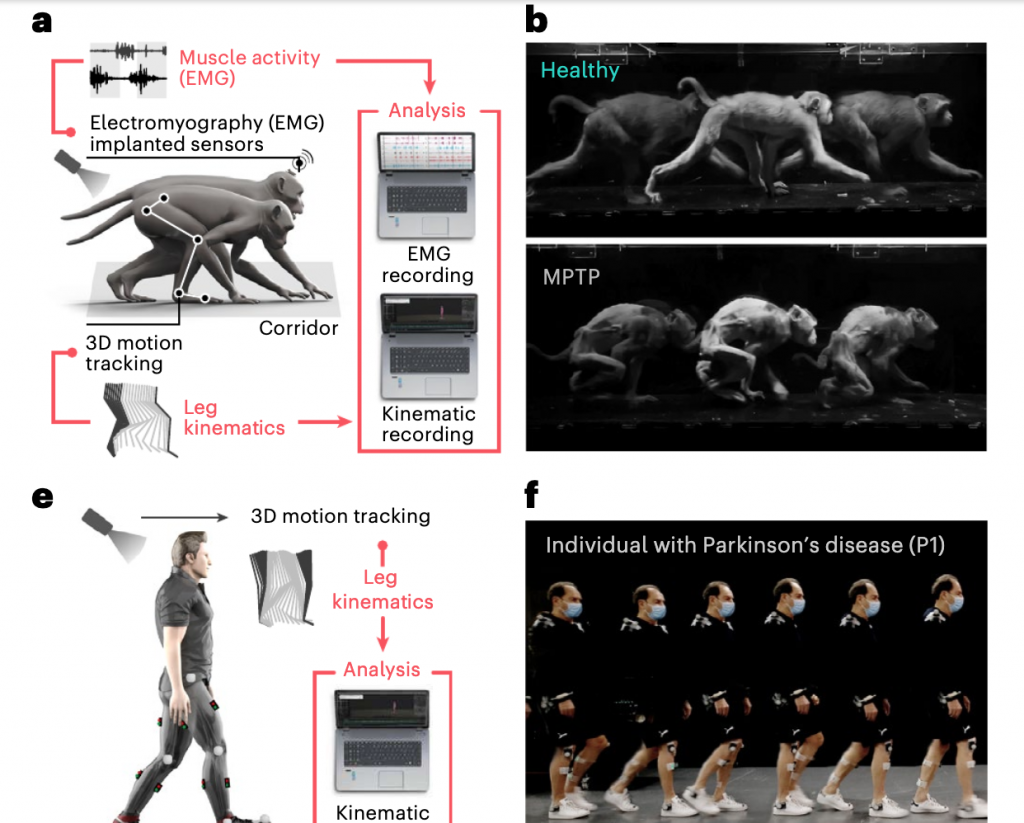
A graphical illustration shows the complexity of the interface that is assisting the patient Marc in walking. (Source: nature.com)
Nature Medicine Study: Neuroprosthesis Implant Shows Promise in Restoring Mobility
A story on technologyreview.com brings good news for people with spinal injuries, Parkinson’s disease, and other similar mobility issues. Abdullahi Tsanni wrote about how a new neurotransmitter enabled a man with Parkinson’s Disease for more than 20 years to walk again.
From Deep Brain to Deep Tissue
For more than 20 years, people with Parkinson ’s-related mobility issues have been treated using deep brain stimulation. Scientists decided to try a neuroprosthesis with a neurostimulator to make tissues and muscles move. The patient, Marc, had Parkinson’s for about three decades. Twenty years earlier, he received an implant that delivered deep brain stimulation. Despite that, he gradually developed neurological problems that left him unable to get around.
“I was forced to stop walking for three years and I was considered handicapped,” Marc said.
Marc is the first and only person to have received the new spinal neuroprosthesis, a small device containing electrodes placed under the skin on top of his spinal cord. It works by sending bursts of electrical signals to stimulate the nerves in his spinal cord, which then activate his leg muscles. The implant is described in a new study published in Nature Medicine.
Swiss Trial
“Then, in 2021, he enrolled in a clinical trial run by researchers at the Swiss Federal Institute of Technology in Zurich and Lausanne University Hospital to test whether a neuroprosthetic device they had developed could restore his walking ability.
“The team had already tested the device on three monkeys with walking and balancing difficulties similar to those experienced by people with Parkinson’s. They implanted the devices into the monkeys’ spinal cords and also gave each monkey a brain-computer interface that allowed researchers to tell when the monkey wanted to walk. Then the researchers delivered short bursts of electrical signals through the spinal implant, ultimately restoring walking abilities in all three monkeys.”
Thanks to a combination of electronics, AI, and robotics with a brain interface, researchers made tremendous progress on Marc’s ability to move comfortably.
In Marc’s case, the team implanted electrodes on the top of his spinal cord and linked them to a neurostimulator placed under the skin in his abdomen. Whenever he wants to take a walk, he pushes a button on a remote control that sends wireless signals to the neurostimulator.
“[The new study] is another technical tour de force by this group,” says Sergey Stavisky, a neural engineer at the University of California, Davis. Stavisky, who was not involved in the study, says he is glad to see the technology working for spinal cord stimulation: “It’s significant and very exciting.”
read more at technologyreview.com







Leave A Comment